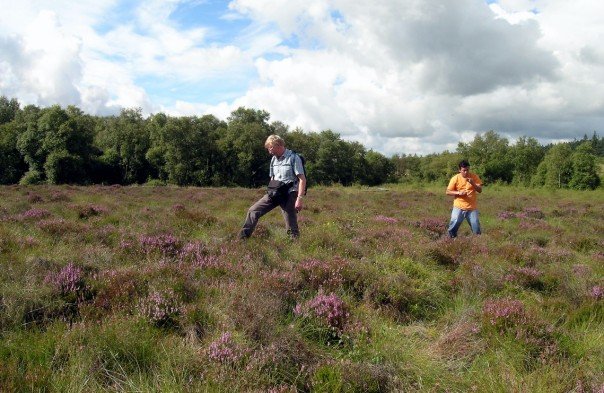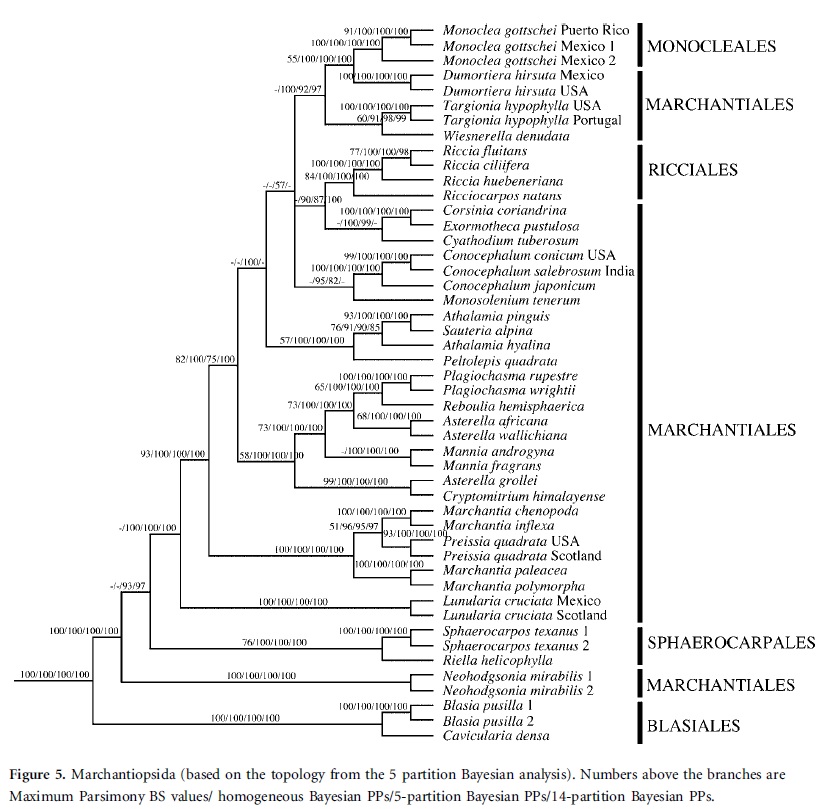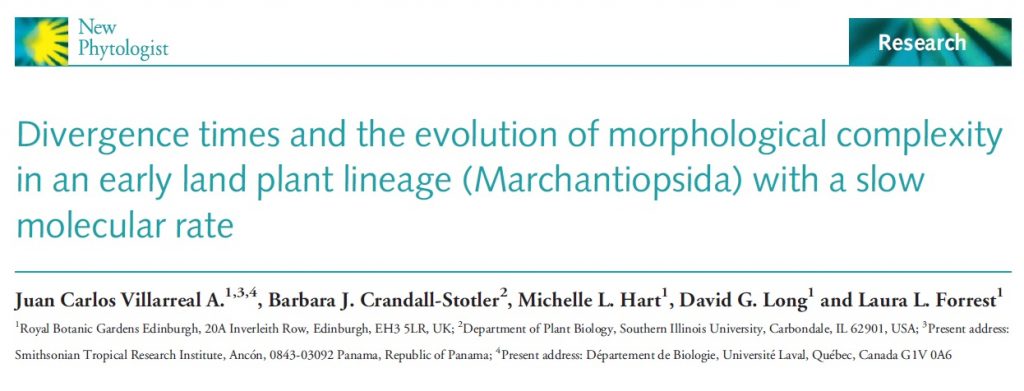Rather a while ago, back in 2003, we started working on a phylogeny of the complex thalloid liverworts at the Royal Botanic Garden Edinburgh (as a Molecular Phylogenetics Project). We were beautifully placed to conduct the work, with taxonomist Dr David Long on the staff, and all the necessary molecular facilities in place. Plants were found, identified, extracted and sequenced, and a matrix started to develop for a set of five loci: the nuclear large ribosomal subunit, the mitochondrial gene nad5, and plastid loci rbcL, rps4 and psbA. The data were analysed in conjunction with sequences generated by Christine Davies, then a PhD student at Duke University, and by myself, as a postdoc, at Southern Illinois University, were presented at the International Botanical Congress in Vienna in 2005, and were published as part of a phylogeny of liverworts, in The Bryologist in 2006.
That same year, we made plans to expand the study, to tie in with a Tree of Life project on liverworts that was coordinated through Prof. Jon Shaw‘s lab at Duke University. Our aim was to sequence more plants for more loci (adding in mitochondrial loci nad1 and rps3 and plastid loci atpB, cpITS, psbT-psbN-psbH and rpoC1), to contribute to the larger project, but also to produce a stand-alone paper on the evolution of the complex thalloids. And this is where the continental drift, or the glaciers, come in. They are both things that can move faster than a scientific paper can be completed…

Fig. 2 inset: a. Riccia cavernosa (Des Callaghan), b. Cyathodium (Zhang Li), c. Reboulia hemisphaerica (Zhang Li), d. Plagiochasma (Zhang Li), e. Lunularia cruciata (Des Callaghan), f. Marchantia (Zhang Li) – from Villarreal et al. 2015, New Phytologist, Fig. 2
We did have data: I even talked about it at conferences – in 2007, at the sixth biennial conference of the Systematics Association in Edinburgh (Forrest, L.L., D.G. Long, A. Clark, M.L. Hollingsworth, Complex thalloids can be simple – unravelling the evolutionary history of the Marchantiopsida), and again at the Botany 2010 meeting in Rhode Island (Forrest, L.L., D.G. Long, M.L. Hollingsworth, J.C. Villarreal A., A. Clark, J. Tosh, P. Hollingsworth, Into the Tropics: a brief history of complex thalloid liverworts). However, there were holdups. Partly, we were waiting until we had complete genus-level sampling for the group, and a small number of very small genera were proving problematic to obtain. Indeed, we only got hold of adequate DNA for Monocarpus and Austroriella (both from Australia) in 2009, and Cronisia (Brasil), Aitchisoniella (China) and Stephensoniella (India) in 2011.

David Long and Juan Carlos Villarreal hunt for liverworts at Balerno Moss (2007) – photograph by Laura Forrest
However, the main stumbling block to getting a phylogeny for the complex thalloid liverworts published was staff time, and in 2014 we were fortunate to obtain 6 months of funding from the Sibbald Trust to employ someone to complete the data sampling, conduct the analyses, and spearhead the paper-writing. Panamanian bryologist Dr Juan Carlos Villarreal joined us in January this year, from Munich Botanical Garden, where he had been working with Prof. Susanne Renner. And just yesterday, Wednesday the 28th October 2015, after 12 years in progress, our stand-alone paper on the phylogeny of the complex thalloids was finally published (Early View), in the journal New Phytologist.



Dr. D.K. Singh
Very interesting information. I shall greatly appreciate receiving pdf of the article and the literature reference, or possibly pdf, of the publication recording Aitchisoliella from China.